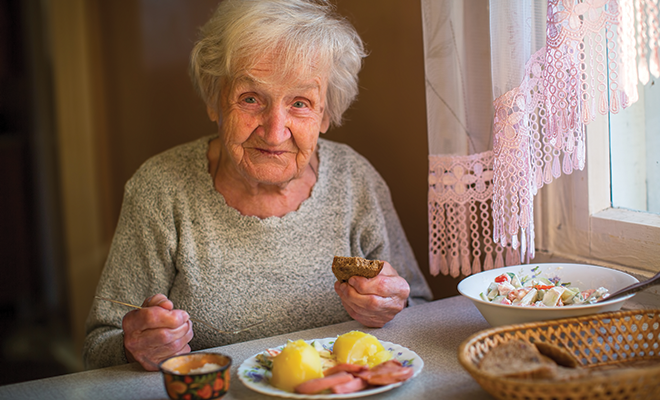
Goal: Aging in Place
Look around your home right now. Is it conducive to your anticipated needs as you age?
Are there stairs that might become difficult to navigate in your advancing years? Is the bathroom open and easy to use? Is everything on one level? Are you close to bus routes and walking paths? Are the grocery story, library, hospital and other resources close by? Will it be easy–or even possible–to remain in your home as you age?
To prepare your home while you plan for the future, be aware of your best practices and consider a long-term view, planning now, so you can be prepared to stay in your home in the years to come. Just as new parents baby-proof their homes, it is equally important to age-proof your residence. As you contemplate your lifestyle, health and overall needs, here are some recommendations to age-proof your home and maximize its usefulness for your entire life.
Make sure all entrances are easy to get in and out of when carrying bags, pets or even a walker. Modify at least one entrance to your home without steps so that it offers easy access to older adults who might visit or to someone in a wheelchair, for example.
When reconfiguring the bathrooms, think safety first. Modifications should be made to reduce falls and other accidents. Consider what you might need to get around, especially if you require a wheelchair in the future. Make sure all of the walls can accommodate grab bars. Ensure the sink, shower and toilet are accessible in terms of height and mobility. A zero-entry walk-in shower is ideal.
The kitchen, one of the main gathering spots of the home, is best enjoyed with an open design coupled with countertops of varying heights, usually between 32 inches and 42 inches. To make storage areas more accessible, install pullout shelves and open shelving. Incorporate both natural and artificial light for both aesthetics and convenience.
When it comes to bedrooms, it’s best to have one on the main floor, so if you don’t already have one there, you might want to add one. Plus, having a bedroom on the main floor now, before you really need it, is the perfect place to welcome overnight guests, a new baby, a college student or an aging parent.
Windows are important as we age, as we require more light for reading and many other tasks. You can add more windows or enlarge existing ones, and the open view will allow you to enjoy the outdoors. For privacy and control of natural light, technological innovations allow motorized, remote control of blinds and draperies, freeing you from pulling heavy drapes open and closed manually.
Consideration of flooring is essential. Opt for flush transitions between spaces to reduce the possibility of tripping and falling. Area rugs can be secured with pads underneath and furniture on top.
An overall open layout of the home allows easier flow of family and guests. The fewer hallways and doors you have to navigate, the more freedom of movement you will enjoy. Widening doorways to 36 inches may entail some structural changes, but it might be needed to accommodate a wheelchair.
Other items to consider changing include outlets, switches and doorknobs. Place these at heights at which they can be reached from a wheelchair. Install switches that are user friendly for arthritic fingers, making it easier to push a button instead of grasp a switch. Lever hardware knobs on doors are easier to manipulate than circular knobs, allowing someone to open a door with a fist or an elbow, if necessary.
Finally, take into consideration the environment just outside your home. A nice, wraparound deck level with the main floor will give easy access to your home plus a place to sit and enjoy being a part of the community. Covered entrances are important to prevent water from gathering on porches and creating a falling hazard.
You can make modifications now and continue as you get older, making the simple changes first, such as bars in the bathroom or task lighting in the kitchen, and then advance to the more expensive projects as time and money allow. Safety should always be your top priority, but that doesn’t mean you have to sacrifice style or make your home look like a hospital. It simply means making some adjustments to ease the transition from one phase of life to another.
The best piece of advice is to simply be creative as you make modifications to your home. Do you have an old carport that could be converted into additional living space? Is that unused dining room the perfect room to create an entertainment or casual living area? Planning today will better prepare you to enjoy your beloved home for the rest of your life. ■
Sources: washingtonpost.com, ageinplace.org and bankrate.com.







